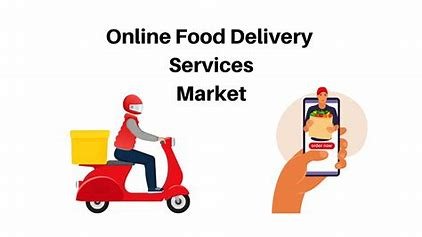
📱 1. The Convenience Factor
One of the primary reasons food delivery services have gained so much popularity is the sheer convenience they offer. Consumers can now order meals from their favorite restaurants without ever leaving their homes, offices, or even their cars.
- No need to cook or go out: Busy lifestyles, long work hours, or simply the desire to relax after a long day means many people prefer to have food delivered rather than go out to eat or prepare meals themselves.
- On-demand ordering: With just a few taps on a smartphone, you can have food delivered in less than 30 minutes from local restaurants, offering instant gratification without any wait time.
🍔 2. Variety of Meal Choices
Food delivery platforms, such as Uber Eats, DoorDash, Grubhub, and Postmates, have vast restaurant networks that provide an extensive variety of options:
- Local favorites and international cuisine: From pizza to sushi, Chinese to Mediterranean, there’s something for everyone.
- Diet-specific options: Health-conscious consumers can choose from vegan, keto, gluten-free, or organic meal options—catering to the rise of specialty diets.
- Restaurant exclusives: Some restaurants only offer delivery through apps or have exclusive menu items, making food delivery even more attractive.
This variety makes it easy for customers to find exactly what they want at any time of day or night.
🕒 3. Time-Saving Benefits
In today’s fast-paced world, time is a luxury, and food delivery services provide a valuable time-saving benefit:
- Skip meal prep: Cooking at home, especially when you have a busy schedule, can be time-consuming. Food delivery allows consumers to save the effort of grocery shopping, meal planning, and cooking.
- Quick solutions: In a world where people juggle work, family, and social commitments, ordering in offers an easy solution to hunger without the hassle of cooking or driving to a restaurant.
- Flexible delivery: Whether it’s breakfast, lunch, or dinner, food can be delivered to your door whenever you need it. Many platforms even offer the option to schedule deliveries in advance, making it easier to plan meals ahead of time.
🌐 4. The Rise of Digital Platforms
The growth of food delivery services is intrinsically tied to the rise of digital platforms and mobile apps that make ordering food easier than ever:
- User-friendly apps: Most food delivery services offer simple, intuitive apps that allow users to browse restaurants, view menus, track orders, and make payments all within a few clicks.
- Advanced features: Features like real-time tracking, estimated delivery times, and customer reviews make the ordering process more transparent and efficient.
- Integrated payment options: Payment is made seamless with options like credit cards, mobile wallets (e.g., Apple Pay, Google Pay), and even cash on delivery in some cases.
These platforms allow consumers to access a wide range of restaurant choices, compare prices, and place orders quickly—all from the palm of their hand. They’ve made food delivery a natural part of daily life, particularly among younger generations.
🚚 5. Fast and Reliable Delivery
Fast, reliable delivery has become a key expectation for consumers. The need for speed and consistency has influenced the business models of food delivery services:
- Real-time tracking: Customers can track their orders in real time, reducing uncertainty and providing transparency in the process.
- Contactless delivery: The rise of COVID-19 has increased the demand for contactless delivery. Many services now allow customers to have their food dropped off at their doorstep or in designated pickup locations.
- Delivery time guarantees: Many services aim to deliver food within 30 minutes or less, providing a fast and reliable option for those in a hurry or who are craving something specific.
📊 6. Growth in Consumer Demand
Consumer demand for food delivery is only growing. According to reports, food delivery services have seen a steady rise, with market revenue growing year over year. This demand is driven by:
- Younger generations: Millennials and Gen Z, in particular, have embraced food delivery as part of their lifestyle, valuing both convenience and the wide range of options available.
- Post-pandemic trends: Even as restrictions ease, many people continue to order food delivery, having adjusted to the ease of it during the pandemic. The behavior shift from dine-in to delivery is proving to be more than just temporary.
- Subscription models: Some platforms even offer subscription-based meal delivery services, where customers can pay a monthly fee for unlimited delivery or exclusive discounts.
💡 Conclusion: The Future of Food Delivery Services
Food delivery services have become an integral part of modern life, combining convenience, variety, and speed to meet the needs of today’s busy consumers. The continuous advancements in digital platforms and mobile technology will only make these services more efficient and user-friendly.
As consumer demand for quick, reliable meals continues to rise, food delivery platforms are likely to keep evolving, offering more innovative features, expanded menus, and even new types of delivery (like autonomous vehicles or drone deliveries) in the future.
